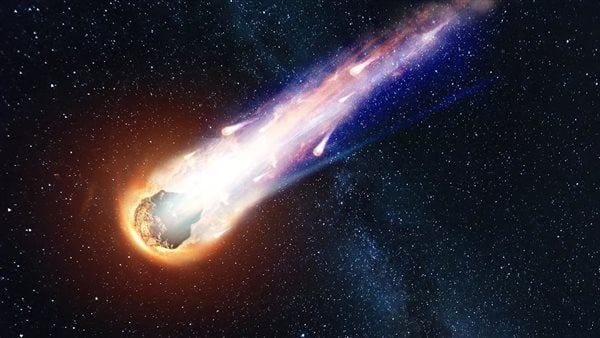Scientists and lovers of astronomical phenomena are looking forward to the passage of the comet “C / 2022 E3 (ZTF)” this week near the sun, as it is the first time in 50 thousand years, and it will be possible to see this newly discovered comet with the naked eye at the end of this January.
The discovery of this small rocky and icy body, with an estimated diameter of about one kilometer, dates back to March 2022, and was monitored by the Zwicky Transient Facility, which operates the Samuel-Oshin telescope at Palomar Observatory, California, USA.
The comet was observed when it passed through the orbit of Jupiter, and it is currently heading towards the sun, and it will reach its closest point to it on January 12, according to astronomers’ calculations.
Nicolas Biver, from the Paris-BSL Observatory, told AFP that the celestial body will then be at a distance from the sun about 10 percent farther than the distance separating the planet Earth from it (about 150 million km).
When a comet approaches the sun, the ice in its nucleus sublimates, that is, it turns from a solid state to a gaseous state, leaving a long trace of dust that reflects the sunlight.
This dust, which looks like shiny hair, is what you will be able to see from Earth as the comet approaches.
The comet reaches its peak brightness “when it is closest to Earth,” said Thomas Prince, a professor of physics at Caltech, who works for ZTF.
However, this phenomenon will be less exciting than the passage of comets Hale-Bopp in 1997 and New Wise in 2020, which are much larger.
The star can be seen easily with binoculars, and perhaps even with the naked eye during part of the night, if the moon’s radiation is not strong and the sky is free of light pollution.
How to watch the comet “C / 2022 E3 (ZTF)”
Astrophysicist Nicholas Beaver hopes for a “nice surprise” that makes the comet’s brightness “twice as strong as expected.”
The best time slice for viewing the comet is likely to be on January 21 and 22 and the following week.
During this period, the comet will pass between the constellations of the stars “The Little Bear” and “The Great Bear”, before heading to the southern hemisphere and then returning to the borders of the solar system, which is believed to be its main location.
According to the current models, comets come from two reservoirs, namely the “Kuiper Belt” behind the orbit of Neptune, or the “Oort Cloud”, which is a wide theoretical region located a light-year away from the sun, within the limits of the gravitational field.
“The tilt of its orbital chart suggests that it is a long-period comet originally from the Oort Cloud,” Beaver explained.
It will not be the first ice comet to pass near the sun, as it had previously had a similar experience 50,000 years ago.
Then the comet came back in the other direction, but it didn’t go as far as the Oort cloud.
Its last pass will be an opportunity for scientists to understand more about the formation of comets, provided by the observations reached by the “James Webb” space telescope.
“We will monitor it from all angles,” Beaver said.
As for Thomas Prince, he commented that this “rare visitor” would bring “information about the inhabitants of the farthest part of the farthest planets in Earth’s solar system.”












